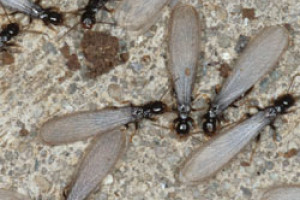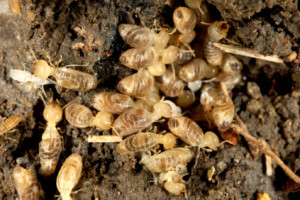
Elongated bodies with four wings of equal size that are longer than the body length
ColorYellowish-brown to black
Size1/4 - 3/8 inches long
HabitatIn extensive colonies among wood structures
Interesting FactsTermite swarmers only keep their wings for a short period of time, after which they are discarded and often heap into piles

Small, wingless bugs with antennae and an elongated shape
ColorCreams and whites; almost appearing translucent
Size1/4 - 3/8 inches long
HabitatUnderground in colonies
Interesting FactsTermite workers comprise the largest group within a single colony, which also includes a queen, termite swarmers and soldiers